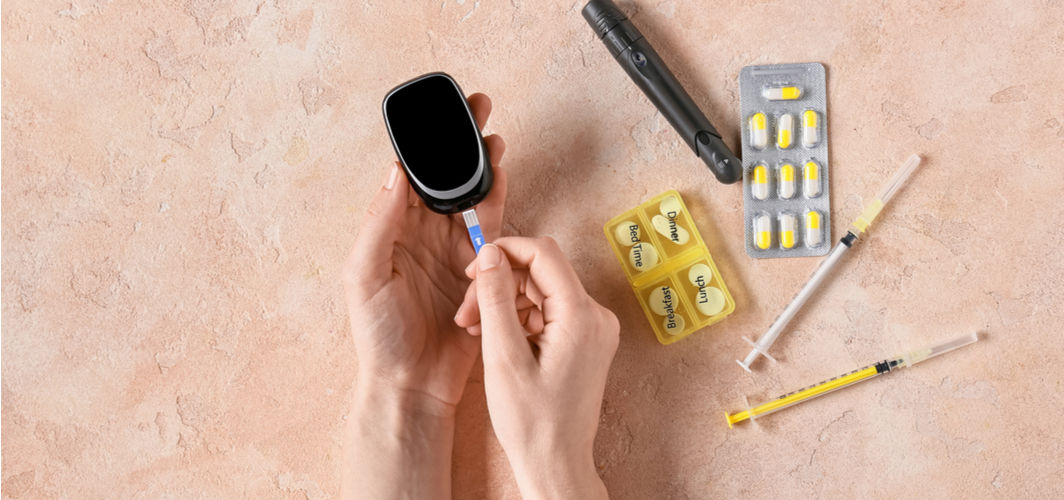Diabetes Management
Acidosis: Types, Causes, Symptoms and Treatments
5 min read
By Apollo 24/7, Published on - 25 June 2021, Updated on - 01 June 2023
Share this article
0
14 likes

The human body contains both acidic and alkaline fluids. Blood plasma, gastric juice, bile, saliva, synovial fluid, etc. are some of the examples of fluids in the human body. These fluids can be intracellular and extracellular and help in the transport of nutrients while expelling waste from the human cells. The body functions best when the level of acid and bases is in equilibrium, known as acid-base balance or pH balance. The kidneys and lungs play a vital role in maintaining this balance.
Both acidity and alkalinity are measured using a pH scale that ranges from 0 to 14, where 0 indicates strongly acidic while 14 indicates strongly basic or alkaline. The human blood is alkaline as its pH ranges from 7.35 to 7.45 while the pH of digestive acids ranges from 1 to 3. Our body monitors the pH closely to maintain homeostasis. Sometimes, excess acid can get accumulated in the blood, resulting in acidosis and if not treated, can result in shock, organ damage, and fatal outcomes.
What are the different types of acidosis?
Most processes in the human body produce acid but most of the time, the lungs and kidneys can maintain the pH balance. However, when there is an issue with any of these organs, the balance can be disrupted and cause acidosis.
Acidosis can be divided into two categories:
1. Metabolic acidosis
Metabolic acidosis originates in the kidneys and occurs when there is too much acid build-up in the body that can happen due to:
- Decreased metabolism or increased production of lactate due to intense exercising, resulting in lactic acidosis.
- Excessive loss of sodium bicarbonate from the body due to diarrhoea or an intestinal surgery (ileostomy), resulting in hyperchloremic acidosis.
- Deposition of ketone bodies due to uncontrolled diabetes, resulting in diabetic ketoacidosis.
- Inability to release extra acid in the urine due to kidney disease or failure, resulting in renal tubular acidosis.
- Poisoning from drugs such as aspirin, methanol or ethylene glycol, resulting in drug-induced metabolic acidosis.
2. Respiratory acidosis
Respiratory acidosis occurs when the lungs fail to expel excess carbon dioxide from the body. It can occur due to diseases that severely affect the lungs and impair breathing. Some of these diseases include:
- Chronic obstructive pulmonary disease (COPD)
- Severe pneumonia
- Asthma
- Heart failure
- Guillain-Barré syndrome
- Amyotrophic lateral sclerosis
- Sleep apnea
People may also develop respiratory acidosis due to over-sedation caused due to opioids, alcohol or sedatives as they tend to slow down breathing. Prolonged slow breathing can reduce the levels of oxygen in the blood and lead to complications.
What are the symptoms of acidosis?
Symptoms of metabolic acidosis include:
- Nausea
- Vomiting
- Loss of appetite
- Malaise (uneasiness)
- Long and deep breaths (hyperpnea)
- Low blood pressure (hypotension)
- Fruity breath
- Shock
- Arrhythmia
- Coma (in severe cases)
Symptoms of respiratory acidosis include:
- Headache
- Drowsiness
- Anxiety
- Wheezing
- Difficulty breathing
- Inability to sleep
The presence of these symptoms alone does not conclude acidosis. To confirm the diagnosis, the doctor may recommend some blood tests to check the pH and levels of bicarbonate.
What is diabetic ketoacidosis?
Diabetic ketoacidosis (DKA) is a serious consequence of diabetes marked by the excessive deposition of ketone in the body, which can result in a coma or even death. Ketones are produced by the cells of the body in the absence of enough glucose. DKA is a medical emergency as high levels of ketone can make the blood acidic resulting in severe consequences. The signs of DKA include:
- Extremely high blood sugar levels
- Urinating more than usual (polyurea)
- Feeling thirsty all the time
- Fruity or nail varnish-like smelling breath
- Fast or deep breathing
- Confusion
- Fatigue
- Loss of consciousness.
Recommended Read: The Dangers of Diabetic Ketoacidosis
Can acidosis be prevented?
Acidosis cannot be prevented completely, but certain measures can help reduce the risk of developing the condition which include:
- Check blood sugar levels frequently using a glucometer. Take the prescribed oral antidiabetics (such as metformin) or insulin regularly to prevent hyperglycemia.
- Increase the portion of fruits and vegetables in the diet as they are alkaline in nature. On the other hand, foods such as eggs, cheese, meats and cereal grains cause the body to make more acid, and hence should be limited.
- Quit smoking as it can damage the lungs and worsen breathing.
- Drink at least 2 litres of water to ensure proper hydration.
- Reduce or quit consumption of alcoholic beverages as it can increase the amount of lactic acid in the body.
- Do not take any new medication without consulting a doctor.
How is acidosis treated?
The management of acidosis aims at treating the cause and balancing the acid-base levels in the body. The treatment of acidosis involves:
- Use of insulin to control the blood sugar levels in the body.
- Removal of poisonous toxic drugs from the blood using activated charcoal or other antidotes.
- Filtration (haemofiltration) and purification (hemoperfusion) of blood to remove extra lactate.
- Use of bronchodilators such as albuterol to open up the airways and improve breathing in people suffering from lung diseases such as asthma and chronic obstructive pulmonary disease.
- Administration of antidotes to reverse the drowsiness caused due to sedatives.
- Providing oxygen using a nasal cannula, continuous positive airway pressure (CPAP) machine or mechanical ventilation to aid breathing in people with severely impaired lung function.
In severe cases of acidosis, sodium bicarbonate can be administered through the veins (intravenously). However, this treatment only provides temporary relief and may cause an overload of sodium and water in the body.
Takeaway
Acidosis is a condition characterized by excess acid accumulation in the blood either due to overproduction of acid, excessive loss of bicarbonate or build-up of carbon dioxide in the blood. It is important to diagnose acidosis at the early stages as it can cause severe damage to vital organs. People experiencing any symptoms of acidosis must consult their doctor for further investigation and treatment.
You can also manage your diabetes like a pro with Apollo 24|7's 12-week empower programme.
Diabetes Management
Leave Comment
Recommended for you

Diabetes Management
How Does Vitamin D Benefit People with Diabetes?
Vitamin D offers several health benefits for individuals with diabetes. It plays a crucial role in improving insulin sensitivity, which further helps in regulating blood sugar levels more effectively. Adequate vitamin D levels in your body may also reduce the risk of developing type 2 diabetes. Vitamin D's role in regulating calcium absorption is crucial for insulin and glucose uptake.

Diabetes Management
Is Increased Thirst A Sign Of Diabetes?
Excessive thirst can be a warning sign of diabetes. Learn about how you can manage and prevent this condition.

Diabetes Management
Numbness and Tingling: A Sign of Diabetes?
Diabetic neuropathy, characterised by tingling and numbness, can develop due to uncontrolled blood sugar levels. Different types of neuropathy can affect various parts of the body. There are measures you can take to manage and slow down the progression of diabetic neuropathy. It is important to consult a doctor if experiencing symptoms or to get screened for diabetic neuropathy.
Subscribe
Sign up for our free Health Library Daily Newsletter
Get doctor-approved health tips, news, and more.
Visual Stories

8 Fruits That are Incredibly Healthy for Diabetes
Tap to continue exploring
Recommended for you

Diabetes Management
How Does Vitamin D Benefit People with Diabetes?
Vitamin D offers several health benefits for individuals with diabetes. It plays a crucial role in improving insulin sensitivity, which further helps in regulating blood sugar levels more effectively. Adequate vitamin D levels in your body may also reduce the risk of developing type 2 diabetes. Vitamin D's role in regulating calcium absorption is crucial for insulin and glucose uptake.

Diabetes Management
Is Increased Thirst A Sign Of Diabetes?
Excessive thirst can be a warning sign of diabetes. Learn about how you can manage and prevent this condition.

Diabetes Management
Numbness and Tingling: A Sign of Diabetes?
Diabetic neuropathy, characterised by tingling and numbness, can develop due to uncontrolled blood sugar levels. Different types of neuropathy can affect various parts of the body. There are measures you can take to manage and slow down the progression of diabetic neuropathy. It is important to consult a doctor if experiencing symptoms or to get screened for diabetic neuropathy.